Liverpool Parish Church Lenten Lecture, 2006
The Rector has asked those who speak to you on the Mondays throughout Lent to speak to the theme “Faith from Liverpool’s Past.”
As any visitor to the City’s Maritime Museum will quickly realise, two dark shadows hang over the history of Liverpool: the Irish Famine and the Slave Trade. Yet out of each of these momentous epochs of Liverpool’s past we can see how people of faith continued offer hope and charity: Faith, Hope and Charity, three impulses which every society and every age need to inform its thinking and its actions.
Thanks in part to the efforts of a previous Rector of this parish, 1999 saw the first memorial erected to the thousands of Irish émigrés who died in the city of typhoid and cholera as they tried to flea the potato famine.
At the height of the famine, in 18477, no fewer than 1,280 mainly Irish people died in Liverpool. There were 20,000 street children. Dr. Duncan, the City’s pioneering public health officer estimated that some 100,000 people were living in abject conditions and ever sheds were erected and two ships moored here in the Mersey as lazarettos, as hospitals for the diseased poor. In the nearby parish of St. Mary’s in one week there were 166 burials of Irish Catholics; 105 of them were children. The coroner described the homes of one woman, Sarah Burns, who died two days before Christmas:
“The floor was composed of mud; in that hovel there were seventeen human beings crowded together without even so much as a bit of straw to lie down on.”
3,000 people were crammed into the workhouse, which stood on the site of today’s Cathedral of Christ the King.
But into this seemingly hopeless situation stepped some singular men and women of faith.
Happily, the life of one of them, long commemorated by a statue in St. John’s Gardens, has recently been re-captured in an excellent new book by Monsignor John Furnival. It is the life of Canon Nugent.
Father Nugent worked for over fifty years to rescue children from the streets of Liverpool and he founded many institutions for the poor and needy. He was an early ecumenist – reaching across Liverpool’s sectarian divide to work with the city’s Protestant leaders- especially the Anglican clergyman, Major Lester, with whom a he forged a deep friendship. He also mobilised Jewish and Unitarian humanitarians and philanthropists, pioneering educational initiatives, challenging priorities, and zealously insisting of the dignity of the city’s masses of abandoned waifs and strays.
It was no exaggeration when, during his Merseyside visit, Pope John Paul II described Father Nugent as “your own pioneer of charity.” That work continues, of course, through the Nugent Care Society of the Liverpool Archdiocese.
For 23 years Father Nugent did his daily rounds as a prison chaplain and he recorded a moving encounter with a 20-year-old young Irish man facing penal servitude who urged him to help the children of the streets from avoiding his destiny. Father Nugent recorded that on one day Walton Prison had 27 boys under the age of 15 as inmates – 26 of whom were Catholic. That is a situation which continues in countries like the Philippines, where Jubilee Campaign recently highlighted the plight of kids behind bars.
The situation in nineteenth century Liverpool was comparable and dire.
The statistics illustrate the realities of Victorian fiction – eloquently portrayed in the hard hitting social commentaries of Dickens and Mrs.Gaskell. In 1868 alone, over 48,000 children between 5 and 14 attended no school and 25,000 were living on the streets of the city. Fr.Nugent wrote: “Wherever you turned you saw crowds of dirty, shoeless, naked children. It would seem as if they were Nobody’s Children.”
Movingly, he noted that “the birds of the air have their resting places and the very dogs have their warm kennels, but these poor little ones huddle together under railway arches, in empty boxes, under theatre show boards, over bakers’ ovens – in fact anywhere to get a little heat and protection from the frosty and nipping night air.”
Monsignor Furnival paints a wonderful canvas around the figure of Father Nugent – putting him into the context of his city and his time, and linking him to the impulses of Cardinals Manning and Newman.
It seems to me that his real genius lay in mobilising not only his own community but in forging alliances with likeminded people; in identifying the greatest contemporary evil and then single-mindedly setting himself the task of doing something about it.
Whether it was through the provision of ships on the Mersey to provide accommodation and training, whether it was by rescuing women and children, helping to organise new beginnings in people’s lives, by running campaigns to galvanise public and political opinion, or in establishing homes and institutions, Father Nugent became Liverpool’s Dr. Barnardo.
The challenges faced by Father Nugent may no longer stalk the streets of Liverpool but they do stalk the streets of many other cities throughout the world. His story should inspire us to see that no child should be “Nobody’s Child” and that it is possible to change circumstances where children are imprisoned or living – and dying – on the streets.
But I said that along with the famine, the other momentous but dark chapter in our city’s history was the slave trade.
This, too, illustrates how people of faith can respond to seemingly intractable situations, bringing hope out of darkness and charity to the unloved.
At the end of the last millennium I took a declaration from the City Council to West Africa. It stated that: “..it is time the City gave expression to its sense of remorse over the effects that the slave trade had on countless millions of people and on the culture of the continent of Africa, the Caribbean and the USA. The Council will co-ordinate the use if all its powers to foster better race relations, greater equality of opportunities and even greater diversity so that the City is itself a celebration of multi-culturalism.”
Estimates of the numbers of Africans sold into slavery vary but over nearly four centuries about 12 million people were forcibly transported into bondage. Between 1701 and 1810 around 5.7 million people were taken into slavery, 2 million coming from the Slave Coast, where Benin is situated. Around 39% went to the Caribbean, 38% to Brazil, 17% to South America and 6% to North America.
In the total Atlantic trade, British ships are estimated to have made 12,000 voyages and to have carried 2.6 million slaves. The trade before 1730 was dominated by London but was overtaken by Bristol in the 1730s, only to be eclipsed by Liverpool in the 1750s. In 1797, 1 in 4 ships leaving Liverpool was a slaver. Liverpool merchants handled five eighths of the English slave trade and three sevenths of the slave trade in Europe. In his Journal of a Slave-trader, John Newton wrote: “I have no sufficient data to warrant calculation but I suppose not less than one hundred thousand slaves are exported annually from all parts of Africa, and that more than one half of these are exported in English ships.” The Liverpool historian, Ramsay Muir, estimated that in 1807, a staggering £17 million pounds was generated in Liverpool through the slave trade. This was the darkest chapter in the City’s history.
At Zomai, in Benin, I saw where, from among the captured slaves, sick, disabled or elderly people were picked out and thrown into a common grave. Some were buried alive.
The slaves to be deported would be taken to The Door Of No Return, marked today by an archway, through which men , women and children would pass before boarding a boat waiting for the middle passage of this evil triangular trade plied between Europe, Africa and the Americas.
But not everyone collaborated and we need to emulate the example of those who us
ed all their energies to oppose slavery.
2007 will mark the bi-centenary of William Wilberforce’s first notable landmark in successfully challenging the trade.
In 1792, on introducing a Bill for Abolition, Wilberforce began his speech with this cry from the heart: “Africa, Africa, your sufferings have been the theme that has arrested and engages my heart, Your sufferings no tongue can express, no language impart.” How apposite these words remain as we consider the continuing depredations in Darfur and the Congo. If you take Sudan, Congo, Rwanda and Uganda together some 7 million people have been killed in the past 15 years – it’s Africa’s Great War but it hardly rates a paragraph in our newspapers.
In 1807, Wilberforce persuaded Parliament to make the trade illegal – against fierce opposition led by men like Captain Hugh Crow of Liverpool, one of a thousand captains who sailed from the port to obtain African slaves.
But, supporters of Wilberforce included the great Liverpool MP, William Roscoe, who said “I consider it the greatest happiness of my existence to life up my voice on this occasion, with the friends of justice and humanity.” On his return to Liverpool he was assailed by the mob, and pulled from his coach and horses in Castle Street.
He spent the remainder of his life working for the abolitionist cause. He penned an epic poem, “The Wrongs of Africa”, in which these lines appear:
“Blush ye not to boast your equal laws,
your just restraints,
your rights defended,
your liberties secured,
whilst with an iron hand ye crushed to earth the helpless African;
and bid him drink that cup of sorrow,
which yourselves have dashed indignant,
from oppression’s fainting grasp?”
He went on to warn his countrymen: “Forget not Britain, higher still than thee, sits the great Judge of nations who can weigh the wrong and who can repay.”
It was no exaggeration when the great historian of Liverpool, James Picton, said that ‘no native resident of Liverpool has done more to elevate the character of the community, by uniting the successful pursuit of literature and art with the ordinary duties of the citizen and man of business’.
In the heat of the commercial boom which hit Liverpool at the end of the eighteenth century, Roscoe became a successful banker and lawyer.
It would have been easy for Roscoe to turn a blind eye to the lucrative practices of the slave trade. The slave traders dominated Liverpool and it was highly unpopular to speak out against it. He and William Rathbone were two of the few who did. Roscoe went further and joined with the Quakers, and the political leaders like Fox and William Wilberforce, to challenge the slavery laws.
Nor was Roscoe simply long on words and short on actions. He supported every project calculated for the public good. The extent of his private charities was considerable. The foundation of Liverpool’s Athenaeum and the Botanic Gardens were largely at his Instigation and today’s John Moores University had its genesis in an educational institution which he helped to found.
Men like William Roscoe and Canon Nugent helped to redeem these two dark periods of our history. Their actions redeem and help to heal the past. But they should also inspire this generation to consider how we might use our own gifts for the common good. This side of eternity there will always be dragons to slay. And, above all else, let no-one forget that like Mother Teresa of Calcutta who said I would not pick up a leper from the street for a thousand dollars, but I will do it willingly for the love of Christ, that Canon Nugent and William Roscoe were both men of God whose Faith was the impulse that shaped them and inspired them. Their lives remind us that Faith has been a central force for good in Liverpool’s past and, please God, it will be so in the future.

